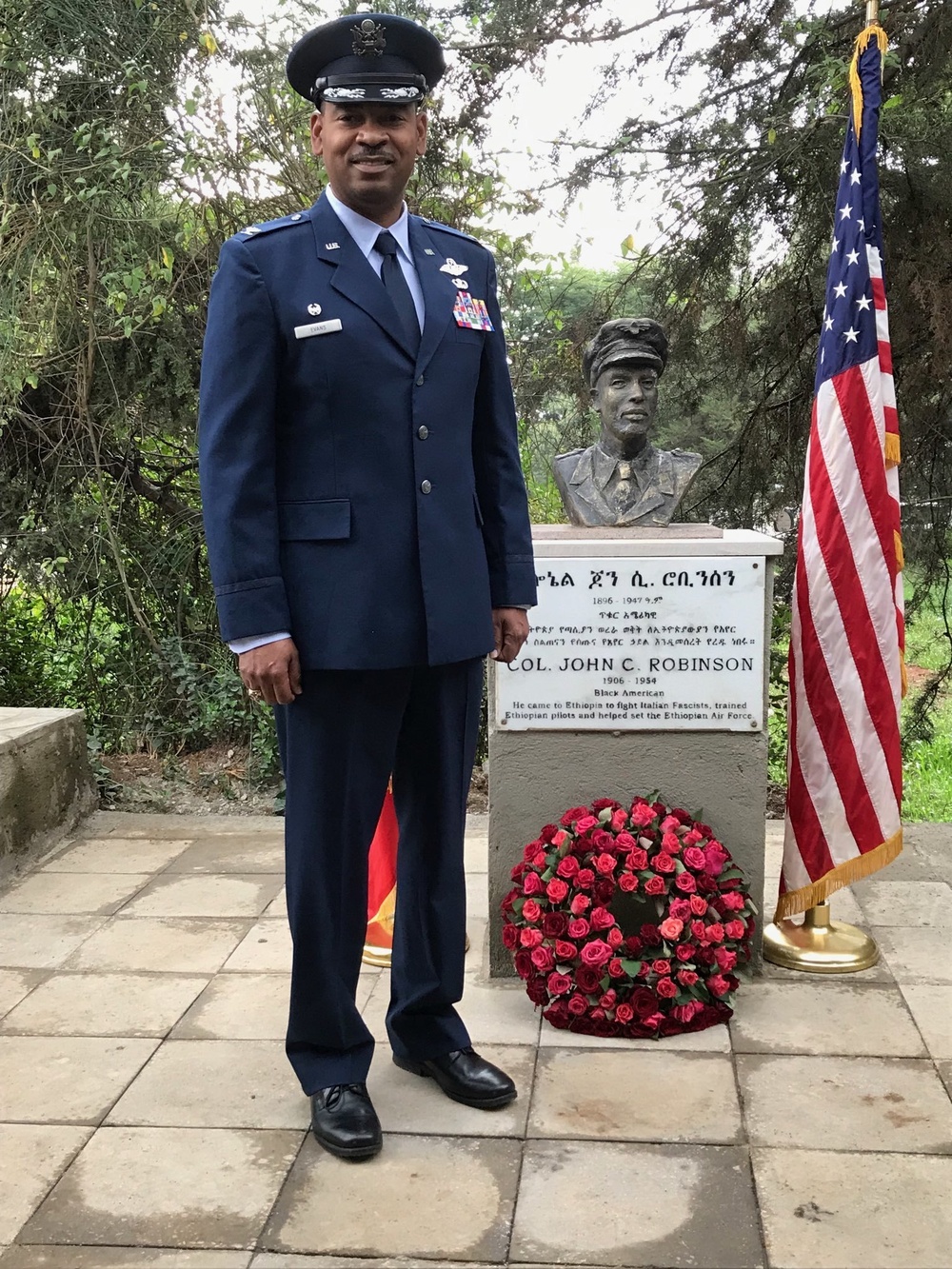John C. Robinson, father of Ethiopian Airlines and Tuskegee Airmen

John Charles Robinson, an American pilot, was a pioneer in aviation history. He was pivotal to the historic movement that trained the first African American pilots in the United States (US).
He also served as a flight instructor for the Imperial Ethiopian Air Force and flew missions in the nation’s war with Italy, earning the nickname “Brown Condor” for his service.
Robinson was born on November 26, 1903, in Carrabelle, Florida, but his family relocated to Gulfport, Mississippi, when he was a small child. He made the decision to become a pilot when he saw his first aeroplane at age seven.
Robinson graduated from Gulfport High School for the Coloured in 1919, keeping his interest in mechanics and machinery alive. But he could not finish his education in Gulfport because African-Americans were not allowed to finish school past the tenth grade at the time.
He did not relent, but instead attended Tuskegee Institute (now Tuskegee University) in Alabama where he graduated from in 1923, after completing his studies in automobile mechanics.
Robinson met another stumble in his desire to pursue a career in aviation. His initial application to the Curtiss-Wright School of Aviation in Chicago was turned down multiple times because African Americans were not permitted to attend at that time.
Determinably, he obtained employment there as a janitor, and attended lessons informally until a teacher noticed his talent, and got him admitted. He became the school’s first black student.
He then persuaded administrators at his former college, Tuskegee Institute to start an aviation programme, earning the nickname “Father of the Tuskegee Airmen” because some of those students formed the first Tuskegee Airmen. These Tuskegee Airmen also became America’s first black military pilots and support personnel.
The school started providing segregated classes; and after earning his degree in 1931, Robinson began instructing African Americans in flight, and eventually made Chicago, Illinois, his home.
Other names for the Tuskegee Airmen were Red Tails or the Red Tail Angels, due to the unusual red paint applied to the tails of their fighter aircraft during World War II. They gained notoriety mostly for their remarkable actions during the air combat over Europe and for dispelling myths that prevented African Americans from enlisting in the US military as pilots.
![]()
Photo: Col. John C. Robinson, left, known as the Brown Condor, just before going up for a test flight, circa 1935. Robinson was credited with having fought off two Italian planes during an observation flight in Ethiopia. (ACME)
In the middle of Ethiopia’s conflict with Italy, Ethiopian Emperor Haile Selassie, sent a formal invitation to Robinson in April 1935 become an officer in Ethiopia. The news of his all-black military aviation unit had reached the emperor.
Robinson and his fellow political and military activists were driven to assist as anti-fascist dictator Benito Mussolini’s imperialist Italy threatened Ethiopia. Given that Ethiopia was not colonised, it also symbolised the greater vision of a free and independent Africa that Robinson supported.
Robinson travelled to Ethiopia in 1935 and held pilot trainings for the country’s emerging air force, undertaking surveillance missions as Ethiopia and Italy went to war. Shortly after, he was appointed air force commander by Selassie, before leaving for the US in 1936.
![]()
Photo: Aviator John C. Robinson, of Chicago, is welcomed home in May 1936. Editor’s note: This historical print contains crop marks and hand painting. (Chicago Tribune historical photo).
America’s perception of African Americans serving in the military was influenced by Col. Robinson’s work in Ethiopia, and this helped create the conditions for the Tuskegee Airmen, to play a major role in the Allied victories in North Africa and Italy during World War II.
However, he went back to Ethiopia in 1944 and resumed his work as an air force pilot instructor. He later contributed to the founding of Ethiopian Airlines. Sadly, Robinson passed away at 50 in Addis Ababa, Ethiopia, on March 26, 1954 after sustaining injuries from an aircraft crash.

To honour Robinson’s contributions to Ethiopian aviation during and after the war with Italy, a reading garden was dedicated at the U.S. Embassy in Ethiopia on February 19, 2015.
Source: TheAfricanDream.net
Abeeb Lekan Sodiq is a Managing Editor & Writer at theafricandream.net. He is as well a Graphics Designer and also known as Arakunrin Lekan.





